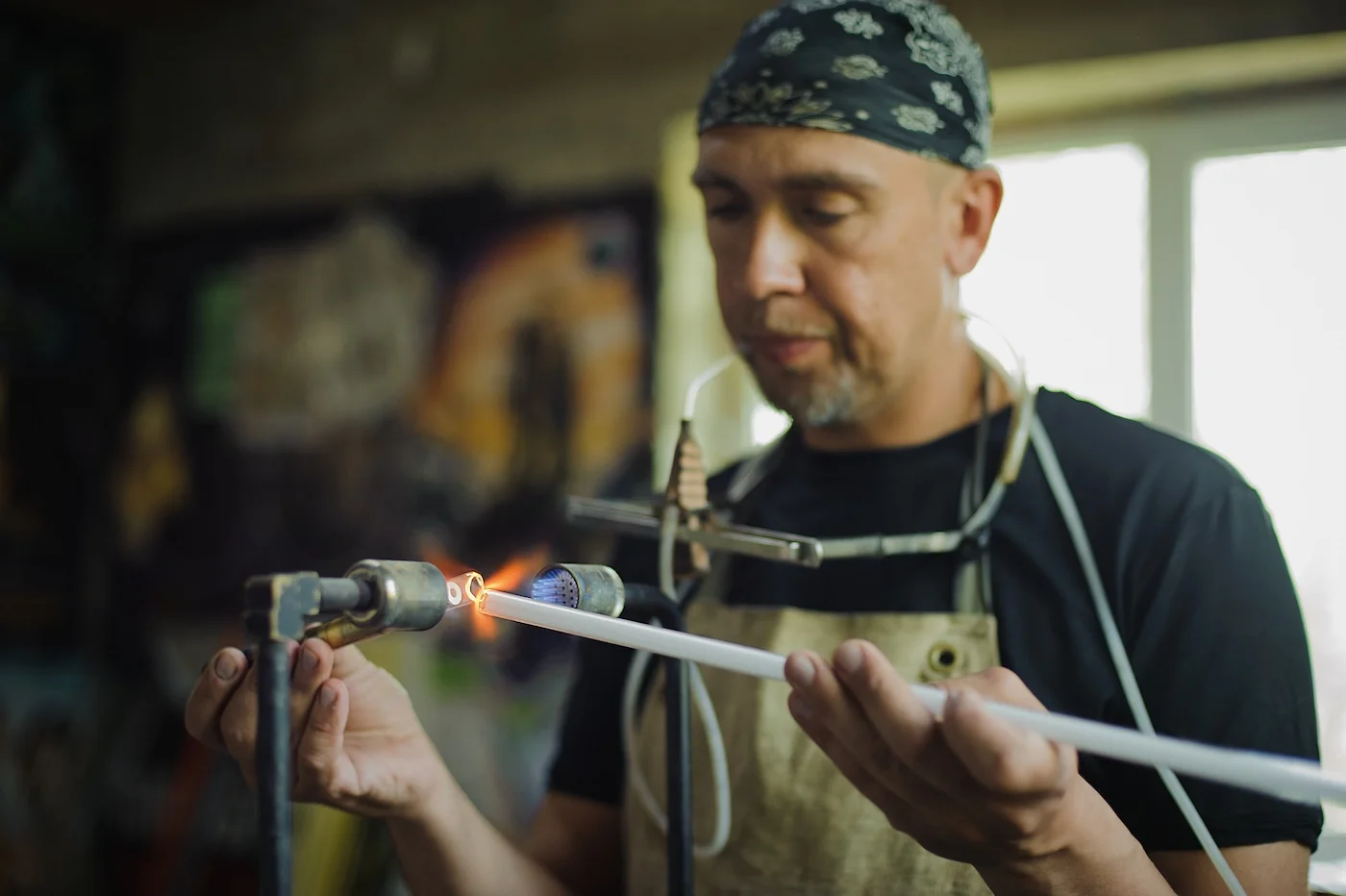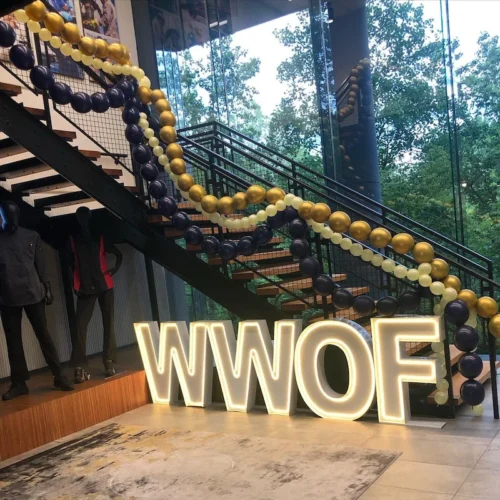Custom Real Glass Neon Signs
Traditional glass neon signs are made from real glass tubes, which are heated and manually bent into shapes or letters, then filled with neon gas or argon. This heating and hand-bending of glass tubes is a purely handmade process, requiring skilled artisans who combine experience, patience, and a keen artistic sense. Artisans with more talent and patience produce neon tubes that are smoother and of higher quality. Glass neon signs evoke a strong sense of nostalgia and are perfect for theme bars seeking a retro ambiance or artists looking for decorative elements.
Here are the main features of our glass neon signs:
- Made with real glass tubes
- Handmade purely by authentic artisans
- Each piece is a unique work of art
- Every detail embodies retro and nostalgic elements
- Sustainable with a lifespan of over ten years
- Continuously rare collectibles

Applications of Glass Neon Signs
Retro Bar Neon Signs
For bars, pubs, and Man Caves with a vintage theme, an old-fashioned glass neon sign is the most captivating and atmosphere-enhancing decorative element. These neon signs carry a warm, nostalgic sentiment that deeply enriches the retro vibe.
Artistic Neon Signs
Real handcrafted glass neon signs transform ordinary spaces into nostalgic, thought-provoking art venues. These signs are not just retro decorations but are visual arts with enduring aesthetic value.
Motel Neon Signs
Glass neon signs remain classic elements and iconic decorations for motels, leaving every traveler with memorable impressions and photographs.
Beer Brand Neon Signs
Neon signs are iconic in advertising beer brands such as Budweiser, Miller Lite, Coors Light, Pabst Blue Ribbon, Yuengling, Blue Moon, and Busch Light. These neon signs are not only key marketing tools but also create a vibrant ambiance that attracts beer enthusiasts and adds a vintage flair to any bar setting.

Iconic and Historic Neon Signs
Welcome to Fabulous Las Vegas Sign
Perhaps the most famous neon sign in the world, this iconic welcome sign at the south end of Las Vegas Boulevard is emblematic of the glitz and glamor associated with Las Vegas. Its retro aesthetic and timeless appeal make it a symbol of the city’s promise of entertainment and excitement.
Vegas Vic (The Las Vegas Cowboy) Neon Sign
An iconic neon sign representing a cowboy that was erected on the exterior of The Pioneer Club in Las Vegas in 1951. Vegas Vic is famous for his friendly greeting, “Howdy Podner,” and his waving motion, embodying the hospitable and wild spirit of Las Vegas.
No Vacancy / Vacancy Neon Signs
Classic signs used by motels and hotels nationwide, known for their practical use and retro charm. These signs are deeply embedded in American road culture, symbolizing the boom of road trips and motor lodges.
Hello There / Hell Here Neon Sign
In Tim Burton’s Batman Returns there’s a neon sign in Selena Kyle’s bedroom saying Hello There. When she transforms to Cat Woman she goes through a rampage in her apartment, smashing the letters O and T
Cowgirl in Red Dress (Vegas Vickie) Neon Sign
Another famous Las Vegas neon sign, Vegas Vickie was the counterpart to Vegas Vic, known for her kicking leg and red dress. Positioned above the Fremont Street Experience, she has been a fixture of Las Vegas neon lore since 1980.

Branches and Schools of Neon Art
1. Minimalist Neon
Key Characteristics: Utilizes simple, unadorned neon tubes to create geometric forms or sparse textual content.
Artists and Influence: Artists like Dan Flavin and Joseph Kosuth have been instrumental in this movement, using neon to explore visual and conceptual minimalism. Their works often focus on the light itself, devoid of any extraneous elements, to evoke contemplation on the interplay between space, light, and viewer perception.
2. Expressionist Neon
Key Characteristics: Emphasizes emotional expression and vivid colors to convey profound personal or societal messages.
Artists and Influence: Tracey Emin is a notable proponent, with works that use handwritten texts and abstract forms in neon to express vulnerability and human emotions. Her neon pieces are intensely personal, making the medium an extension of her diary.
3. Pop Art Neon
Key Characteristics: Incorporates bright, eye-catching neon lights to comment on popular culture and consumerism.
Artists and Influence: Andy Warhol and Keith Sonnier are among those who have merged neon art with pop art sensibilities. Their use of neon mimics the garish and commercial aesthetics of advertising, repurposed to critique and satirize the very culture from which these elements are derived.
4. Narrative Neon
Key Characteristics: Uses neon signs to tell stories or convey messages through sequences of words and images.
Artists and Influence: Bruce Nauman’s works, for instance, often incorporate texts and fragmented narratives that challenge conventions of communication and interpretation, using the stark, luminous quality of neon to draw attention to the content’s underlying complexities.
5. Architectural Neon
Key Characteristics: Integrates neon lighting within architectural contexts, using it to highlight or contrast architectural features.
Artists and Influence: Architects like Zaha Hadid have utilized neon not just as an additive element but as an integral part of architectural design, where it accentuates or juxtaposes the forms and lines of the buildings, creating dynamic interactions between the constructed environment and illuminated art.
6. Interactive and Kinetic Neon
Key Characteristics: Combines neon art with sensors, timers, or motors to create interactive and moving artworks.
Artists and Influence: Jason Rhoades and others have pushed the boundaries of neon art by incorporating elements of movement and interaction, thereby inviting viewers to engage directly with the installations. These works often respond to environmental inputs or viewer movements, making each experience unique and temporally specific.
7. Environmental Neon
Key Characteristics: Focuses on creating site-specific installations that respond to or enhance their surroundings.
Artists and Influence: Artists like Olivia Steele use neon lighting to create powerful visual statements within natural or unexpected environments, challenging the traditional contexts in which neon is expected to be found and integrating messages that resonate with the locale’s historical or cultural narratives.

Installation Methods for Glass Neon Signs
Wall-Mounted Glass Neon Signs
Glass neon signs can be directly mounted on either indoor or outdoor walls using just two screws to secure the sign’s backplate or metal frame to the wall.
Due to the fragility of glass, for artistic decoration and safety protection, our glass neon signs are mounted on a transparent acrylic base. Additionally, a metal grid is installed over the surface of the tubes, blending vintage decor with a metallic style. This not only enhances the aesthetic appeal but also provides extra protection for the neon sign.
Hanging in Front of Glass Windows or Under Ceilings
When installed in front of glass windows or under ceilings, the signs can be easily mounted using 2mm diameter stainless steel cables. Alternatively, iron chains or any type of rope can also be used to safely hang the signs.
Custom Glass Neon Signs FAQ
How long is the turnaround time for custom glass neon signs?
Glass neon signs require a higher level of craftsmanship due to their fragility, necessitating more patience to produce a higher quality sign. Generally, you can expect to receive your sign within 7-14 business days.
How long do glass neon signs last?
With proper care, glass neon signs can last for many years.
Why are glass neon signs more expensive than LED neon signs?
Only a few artisans are skilled enough to produce glass neon signs, and the number of craftsmen with high expertise is limited. Each handcrafted piece is unique and requires more time to create, thus increasing the cost.
Can glass neon signs be repaired if they break?
It depends on the extent of the damage, but most glass neon signs can be repaired.
Is it safe to use glass neon signs indoors and outdoors?
Glass neon signs are safe to use indoors and outdoors if installed correctly. However, because they are fragile, they should be placed out of reach of children and pets.
[blocksy-content-block id="10807"]




Reviews
There are no reviews yet.